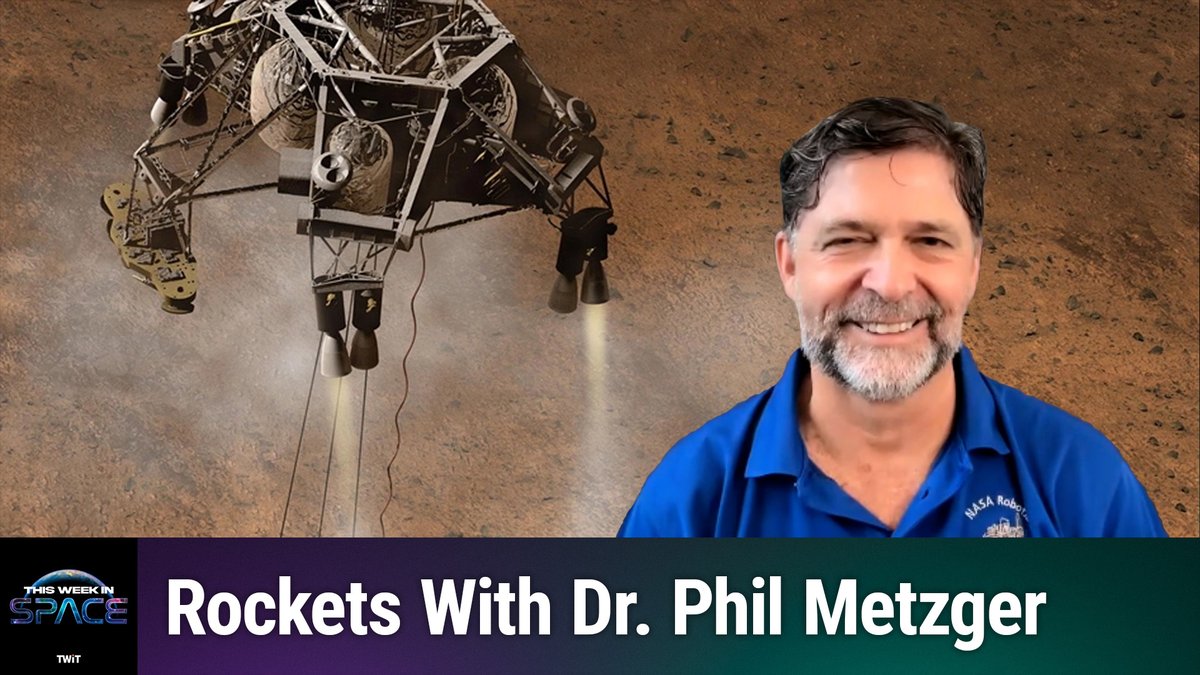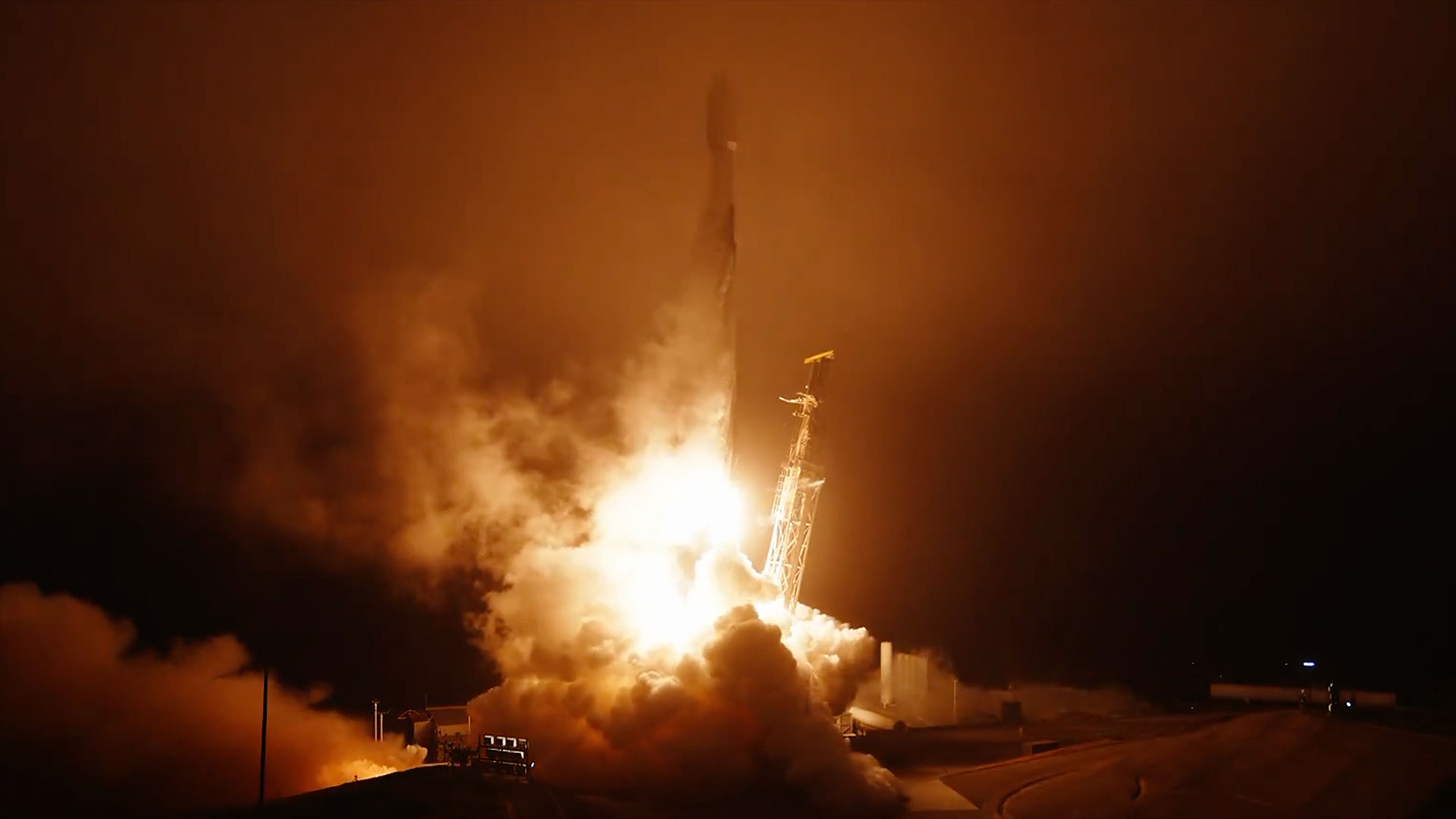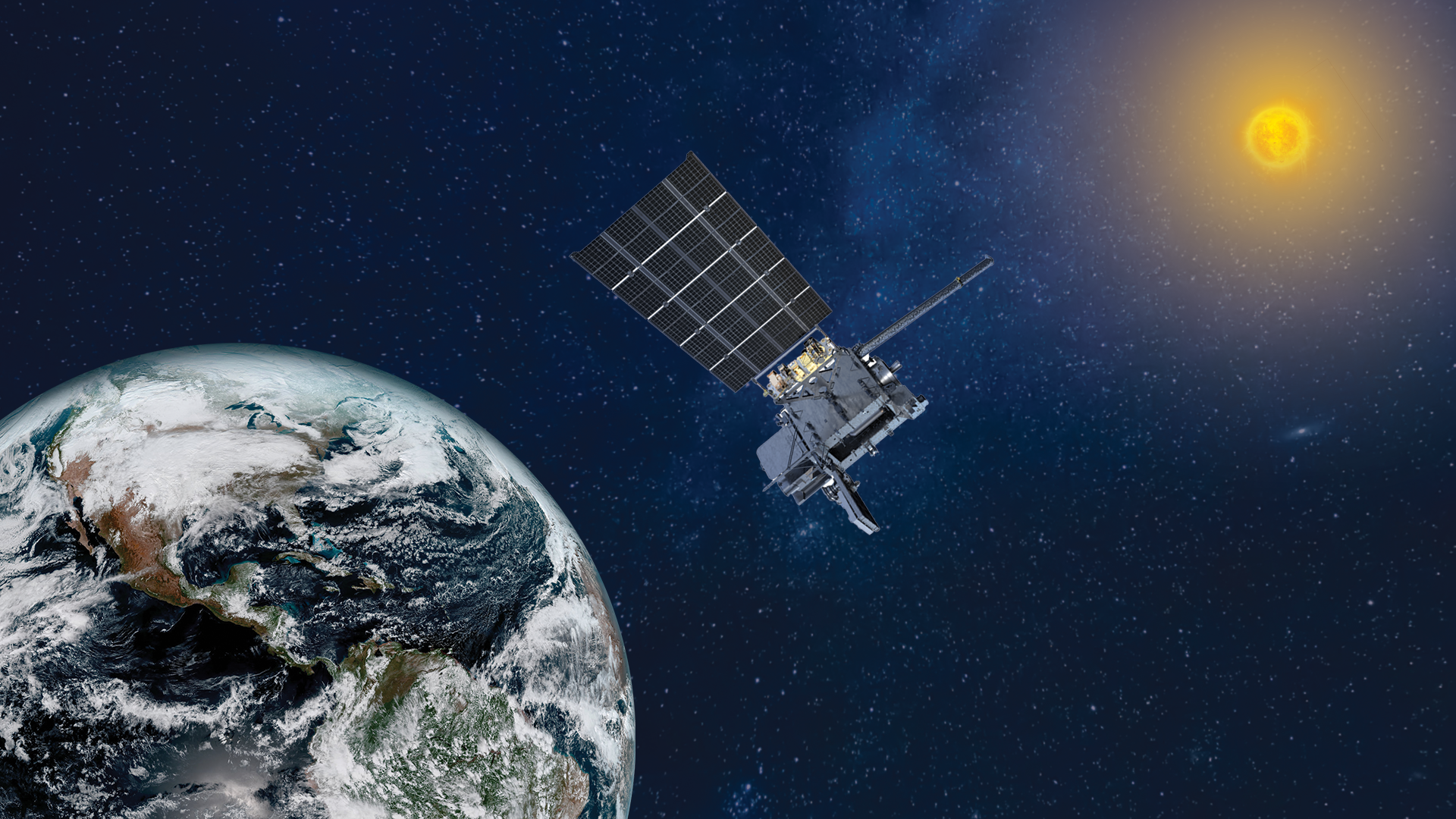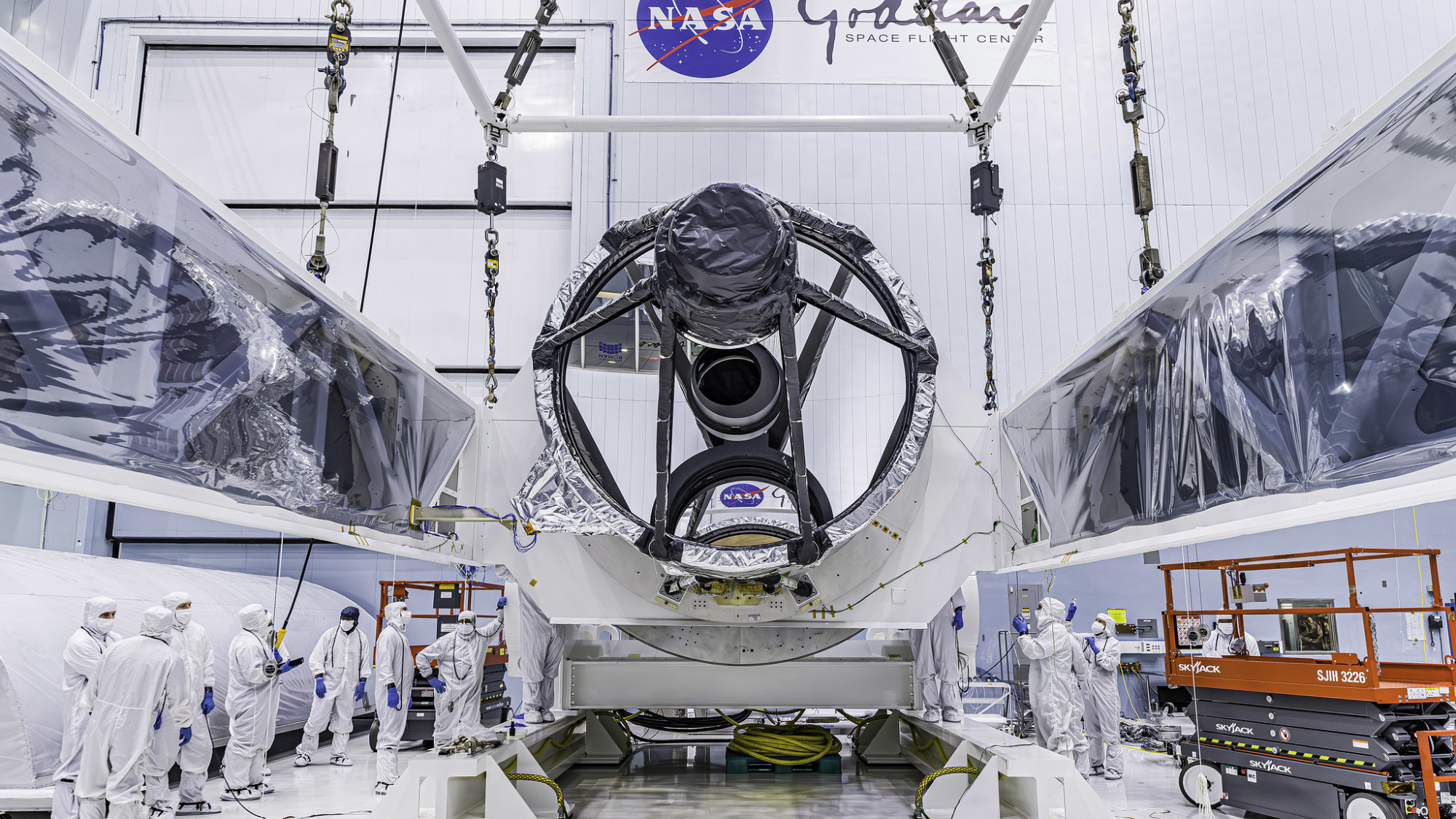This baby galaxy cluster is powering extreme star formation with a hidden fuel tank
"SPT2349-56 is a system so extraordinary that we may have caught one of the most massive clusters under formation at a very brief and crucial stage."
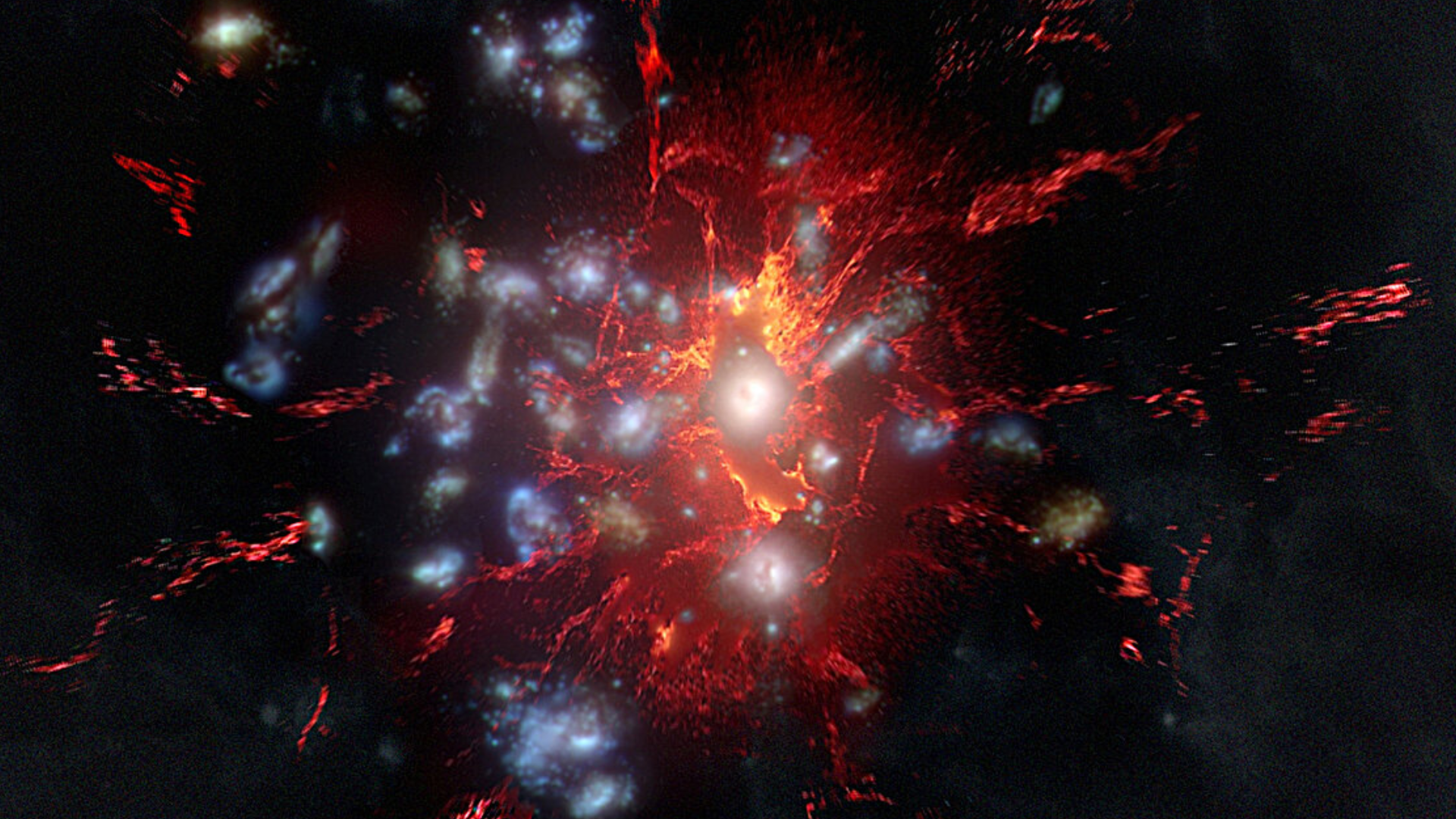
Astronomers have discovered a previously hidden "cosmic fuel tank" in an infant cluster of forming galaxies.
This vast reservoir of cool molecular gas is found in the protocluster known as SPT2349-56, located 12 billion light-years away, and could power an intense burst of star formation in the baby galaxies that could go on for 400 million years.
The team behind this discovery speculates that this gas could eventually become the hot, diffuse gas called the intracluster medium (ICM) that has been seen filling mature galaxy clusters.
The discovery was made using the world's largest radio telescope, the Atacama Large Millimeter/submillimeter Array (ALMA), consisting of 66 antennas across the Atacama Desert region of Northern Chile.
"We discovered a substantial amount of molecular gas in the protocluster SPT2349-56, significantly more than the previous measurement," team leader Dazhi Zhou of the University of British Columbia told Space.com. "This gas is unlikely to come from molecular clouds within individual galaxies. Instead, it appears to be a more diffuse reservoir permeating this ultra-dense environment."
Zhou explained that molecular gas is thought to be the direct fuel for star formation, but the newly discovered reservoir can also provide a continuous supply of raw material for starburst — a period of intense star birth.
"This could explain how protocluster galaxies sustain their intense star-forming activities," the University of British Columbia researcher added. "Our findings could also have major implications for understanding how the most massive galaxies formed in galaxy clusters."
An extraordinary young cluster
As their name suggests, protoclusters like SPT2349-56 are the progenitors of galaxy clusters, some of the largest cosmic structures we see in the present-day universe.
Fully grown galaxy clusters, like the Virgo cluster which contains our galaxy and its local group, are large, gravitationally bound structures dominated by mature elliptical galaxies with little star formation.
Get the Space.com Newsletter
Breaking space news, the latest updates on rocket launches, skywatching events and more!
In protoclusters, Zhou explained that galaxies are in the process of falling into the cluster center, undergoing starburst periods as they do so. Thus, studying protoclusters provides astronomers with a direct look at how the universe's large-scale structures evolved.
"One of the biggest mysteries surrounding protoclusters is that the level of star formation we observe is far higher than what cosmological simulations predict," Zhou said. "SPT2349-56 is an extreme case of this. Over 30 galaxies are packed into a region comparable in size to the Andromeda galaxy, one of our nearest neighbors.
"However, this system is forming stars at a rate 10,000 times higher than Andromeda."
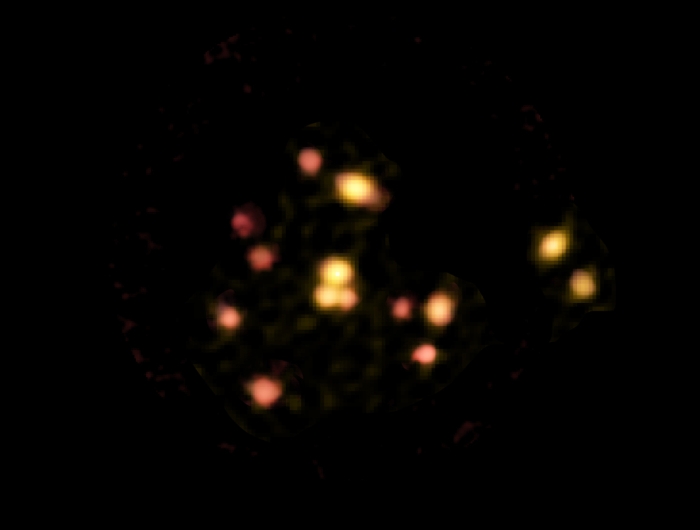
And the ultradense environment of SPT2349-56 gets even more extreme.
Astronomers have discovered more than 10 ultraluminous infrared galaxies (ULIRGs) within this protocluster. ULIRGs are a very rare population of galaxies with intense star formation activity.
"To put this into perspective, we cannot even find a single ULIRG in our local galaxy cluster, Virgo," Zhou said. "What makes it even more intriguing is that ULIRGs are typically formed through galaxy mergers and their lifetimes are usually very short, yet we have found no clear signs of mergers in ULIRGs in this protocluster system. This raises the question of how such an extreme concentration of ULIRGs could have formed in SPT2349-56."
The answer could lie in this hitherto undiscovered reservoir of cool molecular gas in SPT2349-56.
"Traditionally, molecular gas is thought to be concentrated within galaxies. Outside galaxies, gas is usually hotter and less dense, which is predominantly in atomic form," Zhou said. "So, finding such a significant excess of molecular gas not clearly associated with individual galaxies was pretty unexpected."
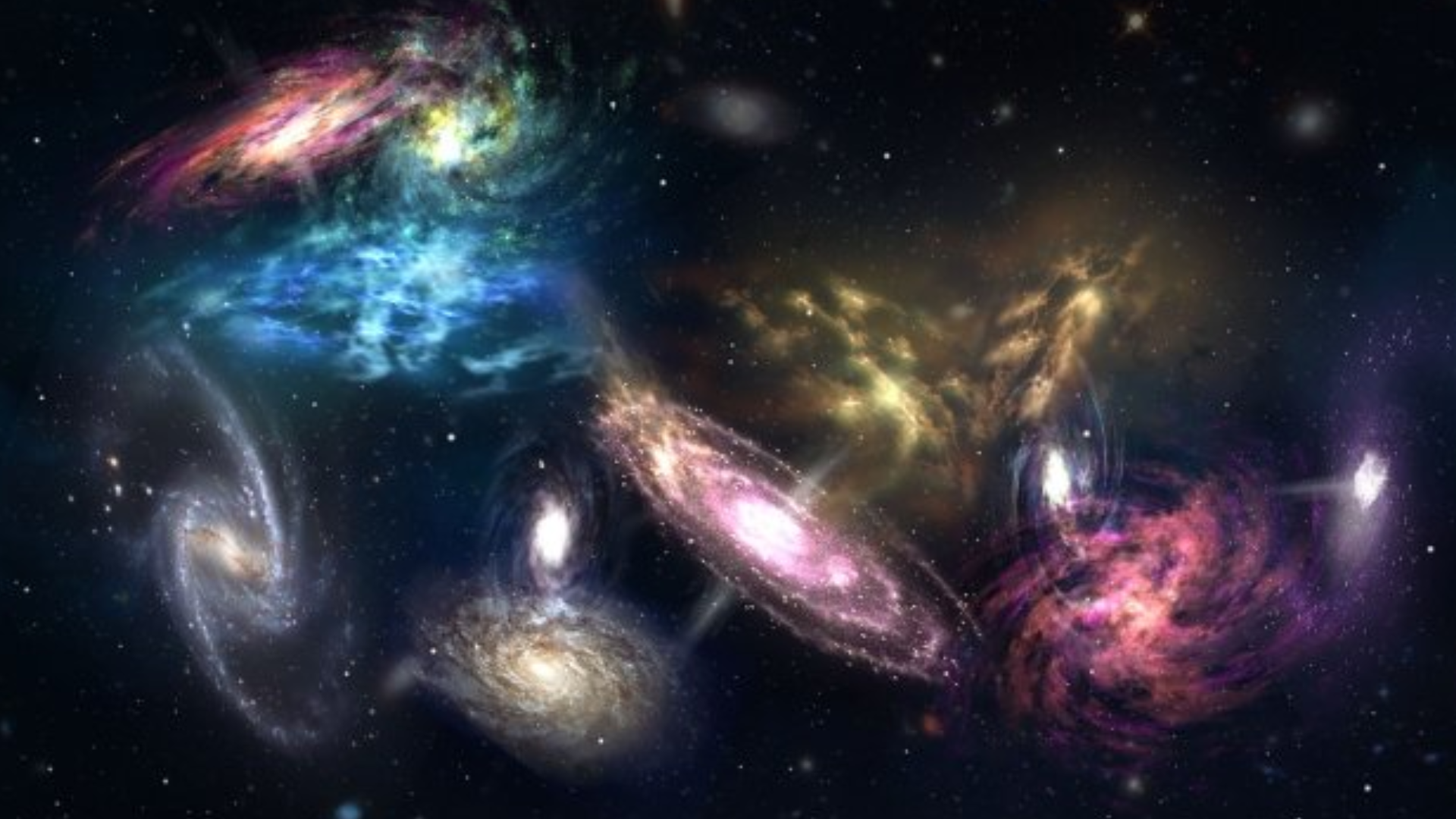
Zhou thinks SPT2349-56 is also extraordinary because ALMA seems to have caught it in a brief, rarely observed, yet crucial, stage of its evolution on its way to becoming one of the most massive galaxy clusters.
"In later stages, violent mergers could erase the evidence of how it formed. SPT2349-56 provides a rare opportunity to really understand how massive elliptical galaxies were built in cluster centers," Zhou said.
The team now intends to investigate some of the remaining mysteries surrounding this molecular gas, including where it came from and where it is going.
"We still don't fully understand the origin and fate of this extended gas. Will it cool down and form new stars? Or will it heat up and become part of the hot intracluster medium?" Zhou said. "We would like to investigate further how this gas was produced and how it interacts with the protocluster galaxies, which could reveal the main drivers of the extreme star formation in SPT2349-56 and the early formation of massive galaxy clusters.
"The discovery is just the beginning!"
The team's research was published on March 17 in The Astrophysical Journal Letters.
Join our Space Forums to keep talking space on the latest missions, night sky and more! And if you have a news tip, correction or comment, let us know at: community@space.com.

Robert Lea is a science journalist in the U.K. whose articles have been published in Physics World, New Scientist, Astronomy Magazine, All About Space, Newsweek and ZME Science. He also writes about science communication for Elsevier and the European Journal of Physics. Rob holds a bachelor of science degree in physics and astronomy from the U.K.’s Open University. Follow him on Twitter @sciencef1rst.
You must confirm your public display name before commenting
Please logout and then login again, you will then be prompted to enter your display name.

